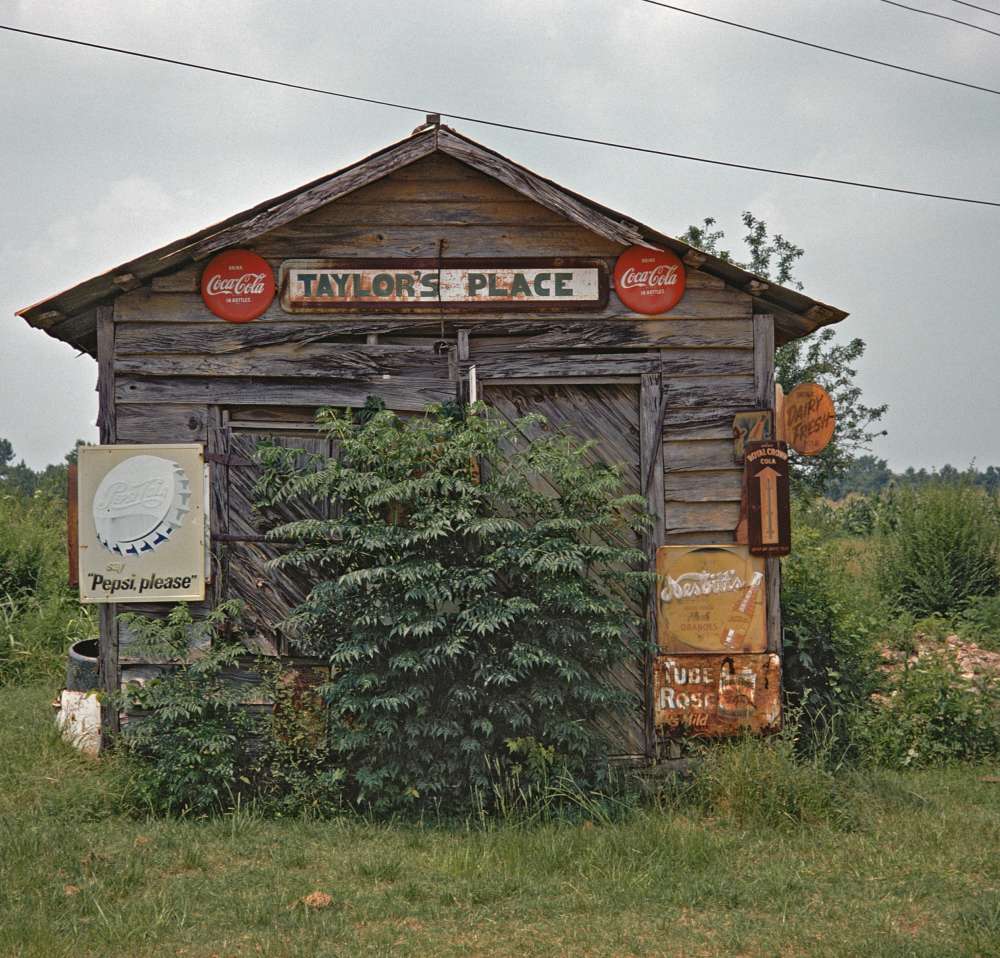A summer squall tore the sky open one afternoon in Stewart, Alabama, when William Christenberry visited a cemetery near where his family had owned a farm since 1916.
As the dark clouds marched south — the rain giving way to bands of sun — he noticed the crepe-paper wreaths on the graves dripping lavenders, pinks, and a deep red. He remembered the sentinel oak tree watching over the place, the stand of pines at its edges, and the mounds that rose and fell, marking the lives of the people who lived there before him. But the pigments falling off those paper wreaths onto the red earth of west-central Alabama stuck with him. He made some photographs, then returned home and painted that graveyard. Fifty years later, he wrote, “That graveyard in Stewart was the first one I was interested in.”
In 2001, after Christenberry galvanized his place among the South’s most prominent artists (and one of the most adored in America), he told Andy Grundberg, “Whenever someone asks why I always photograph in Alabama, I have to answer that, yes, I know there are other places, but Alabama is where my heart is.”
Like Hemingway’s imprint on the green hills of Africa or Faulkner’s on Mississippi, Hale County belonged to William Christenberry — just as Memphis belongs to William Eggleston, Eatonville to Zora Neale Hurston, or Sacramento to Joan Didion.



